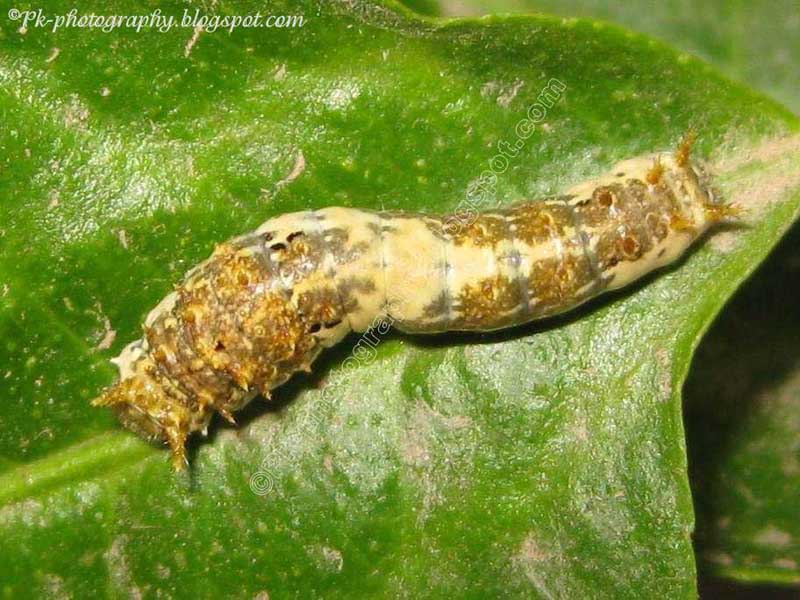
Lime Butterfly Caterpillar Nature, Cultural, and Travel Photography Blog
Watch on. My latest YouTube video: "Caterpillars on my lime tree - citrus butterfly 2022.". Citrus butterfly larvae are quite common on citrus plants. There are couple of species involved: large citrus butterfly (Papilio aegus) - aka orchard swallowtail; and small citrus butterfly (Papilio anactus) - aka dainty swallowtail.
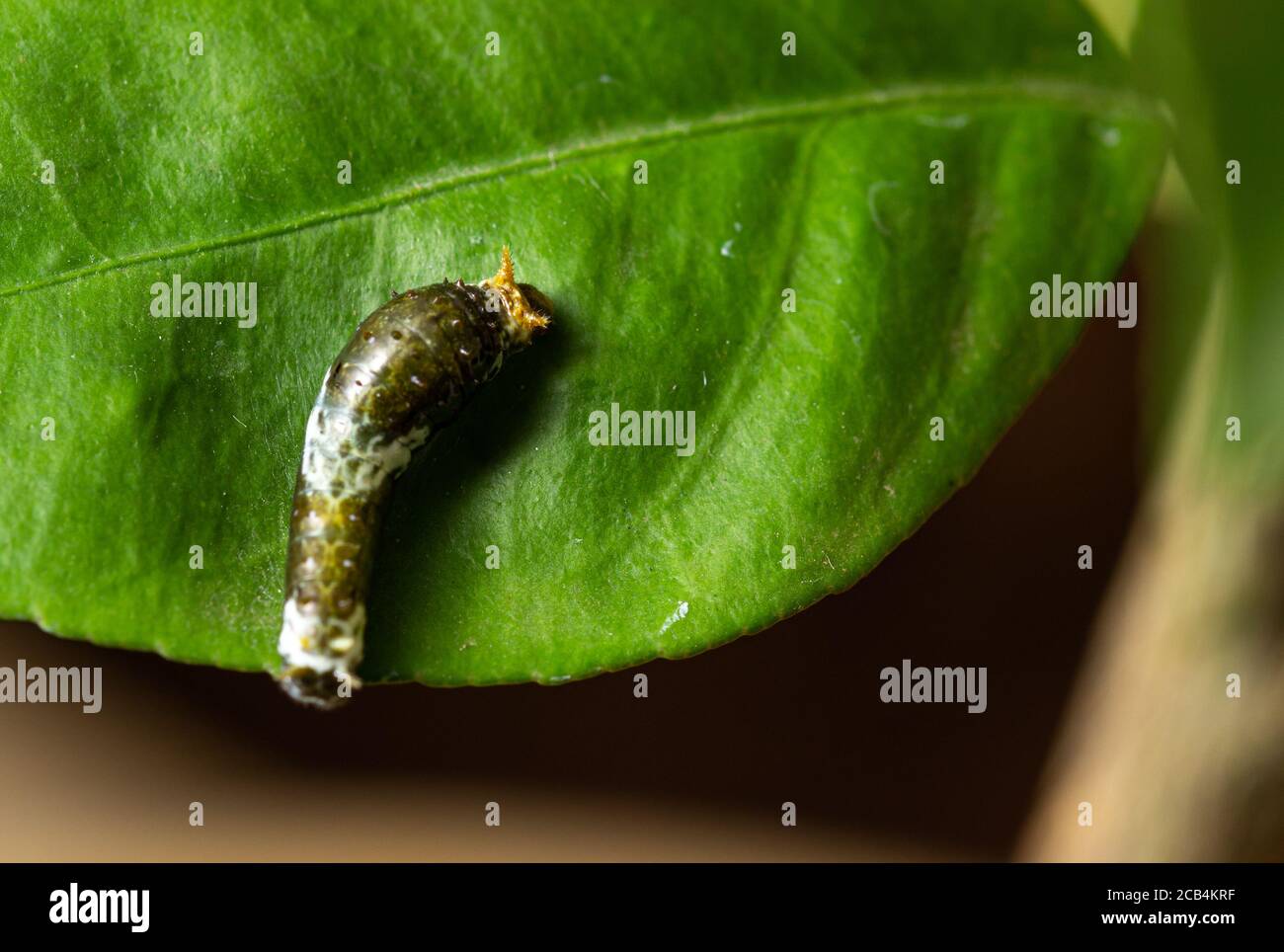
Citrus caterpillar relaxing on leaf also known as lemon tree caterpillar Stock Photo Alamy
is the largest butterfly in the United States and Canada with a wing span reaching between 4 inches to over six inches. Zanthoxylum americanum, common rue, Ruta graveolens, and hop tree, Ptelea trifoliata. On the left you'll see a mature caterpillar (disguised as a bird dropping). The one on the right is a younger caterpillar.

A Caterpillar Crawls on a Lime Tree Stock Image Image of color, botany 237651085
The caterpillars are camouflaged to look like bird droppings as to help them blend in and avoid predation. Host plants for the Giant Swallowtail are wild lime (zones 9A-11) (including other citrus trees such as sweet orange), Hop Tree (zones 3-9) , Prickly Ash (zones 3-7) and Common Rue (zones 5-9). I'm growing (pushing the zone here in 10A.

Jarowair Our Patch Lemon Tree Caterpillar
Caterpillar Food Plants Lime ( Tilia sp. ), elms ( Ulmus sp. ), Alder ( Alnus glutinosa ), Downy Birch ( Betula pubescens) and Silver Birch ( Betula pendula ). In London, Plane ( Platanus x hispanica) and cultivars of Cherry. Habitat Broadleaved woodland, urban areas, parks and gardens in lowland areas. Distribution Countries: England, Wales

An Early 3rd Instar Lime Swallowtail Caterpillar Resting on a Lime Tree Leaf Stock Photo Image
Description (Back to Top) Adult: Adult giant swallowtails are large butterflies with a forewing span of 11.7 to 17.5 cm) (avg. 14 cm) for males and a span of 13.5 to 18.8 cm (avg. 14.7 cm) for females. The dorsal wing surfaces of the butterfly are black with a striking diagonal yellow bar across the forewings.

Lemon Tree Caterpillar
2. Tomato and Tobacco Hornworm Moths. Scientific name: Manduca genus. The tomato hornworm and its very close relative the tobacco hornworm are among the most common and destructive insects in the Northern Hemisphere. The tomato hornworm is a huge green caterpillar that eats tomato leaves and young fruit, and if you find one on your vines then.

Closeup a Green Lime Tree Caterpillar on Human`s Fingers Stock Image Image of lemon, macro
The citrus swallowtail caterpillar often called the "citrus swallowtail" or "citrus orange dogs" of citrus trees, is the larva of the giant swallowtail butterfly (Papilio cresphontes cramer). This caterpillar is a big problem for the gardens of the United States and other citrus-growing countries.

Caterpillar on lime leaf YouTube
The caterpillar of this non-native butterfly can defoliate a citrus tree, on your solution for Florida-Friendly gardening from the University of Florida's Center for Landscape Conservation and Ecology.

Vibrant Green Lime Swallowtail Caterpillar Resting on a Lime Tree Leaf Stock Photo Image of
This is the Caterpillar of a Citrus Swallowtail, Papilio demodocus, a lovely butterfly that feeds on the leaves of citrus trees while in the larval stage. All the features you describe are used as defense mechanisms by the caterpillar, which has a forked organ known as an osmeterium that is revealed and accompanied by a scent some predators.

Giant Swallowtail caterpillar on lemon tree. I found a swa… Flickr
The lime swallowtail, Papilio demoleus Linnaeus, is sometimes called the chequered or citrus swallowtail. This butterfly ranges widely and is an extremely successful invader. Its proliferation appears to be aided by agricultural land use and urbanization that create new, suitable open habitat and enhanced availability of resources. Figure 1.

Caterpillar..swallowtail..on lime tree. a photo on Flickriver
The fully grown Lime Hawkmoth caterpillar has a maximum length of 65mm, green with pale lateral stripes. Some develop small, red, sub dorsal markings. Notable features of the caterpillar are the curved blue tail horn with hints of red and yellow on the underside. Beneath the tail horn is a small cluster of raised yellowy orange tubercles.

Vertical Image of Vivid Green Lime Swallowtail Caterpillar Crawling on a Lime Tree Branch Stock
I regularly have citrus butterfly larvae (caterpillars) on my citrus trees - especially my lime tree. There are two native butterfly species which visit: lar.
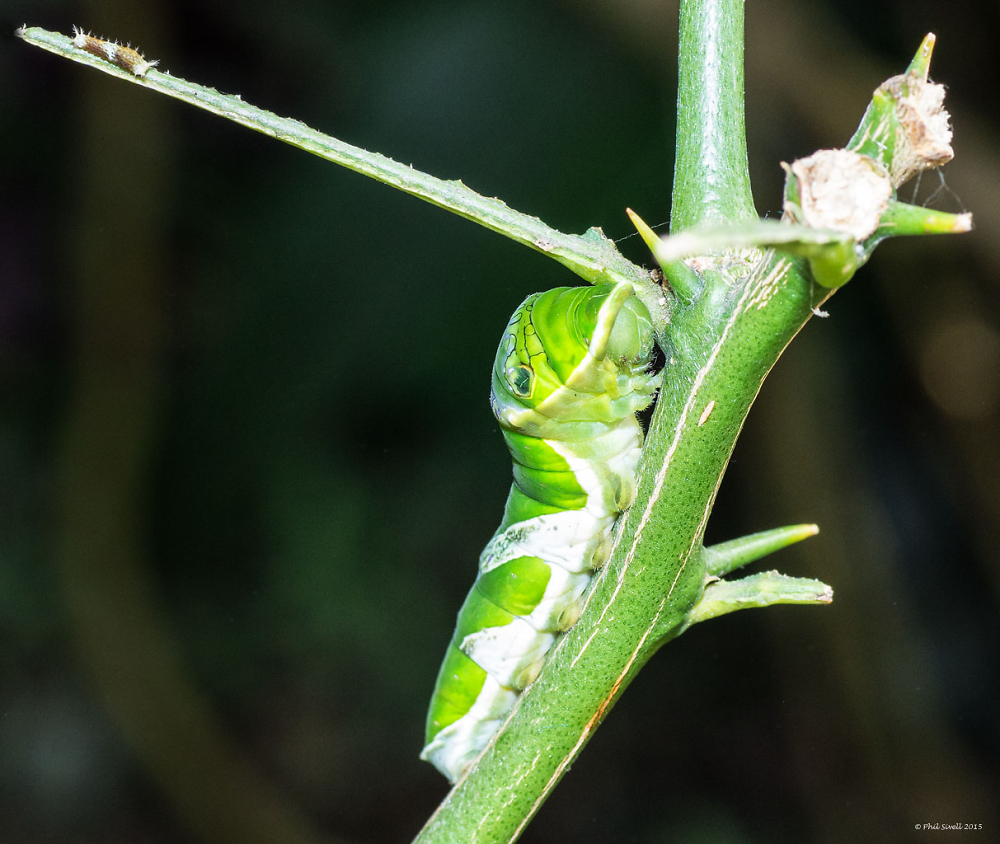
Common Lime Caterpillar
These caterpillars feed on plants that belong to the Citrus family, including the lime tree. They are sometimes considered to be minor pests of the sweet orange, which is how they acquired their "orange dog" and "orange puppy" nicknames. The giant swallowtail butterfly has dark brown or black wings with striking yellow bands.

Caterpillar Eat Leaf from Lime Tree Stock Image Image of leaf, tree 256095737
Meet "Limey", the lime-eating caterpillar: We have a kaffir lime tree in a large clay pot in our carport. Kaffir lime is a wonderful ingredient in Southeast Asian cooking, particularly Thai dishes. We've used kaffir lime leaf in many recipes, including Stir fried Pork with Long Beans, Thai Green Curry, and Wild Salmon Cakes with. Continue reading Common Lime Swallowtail Butterfly.
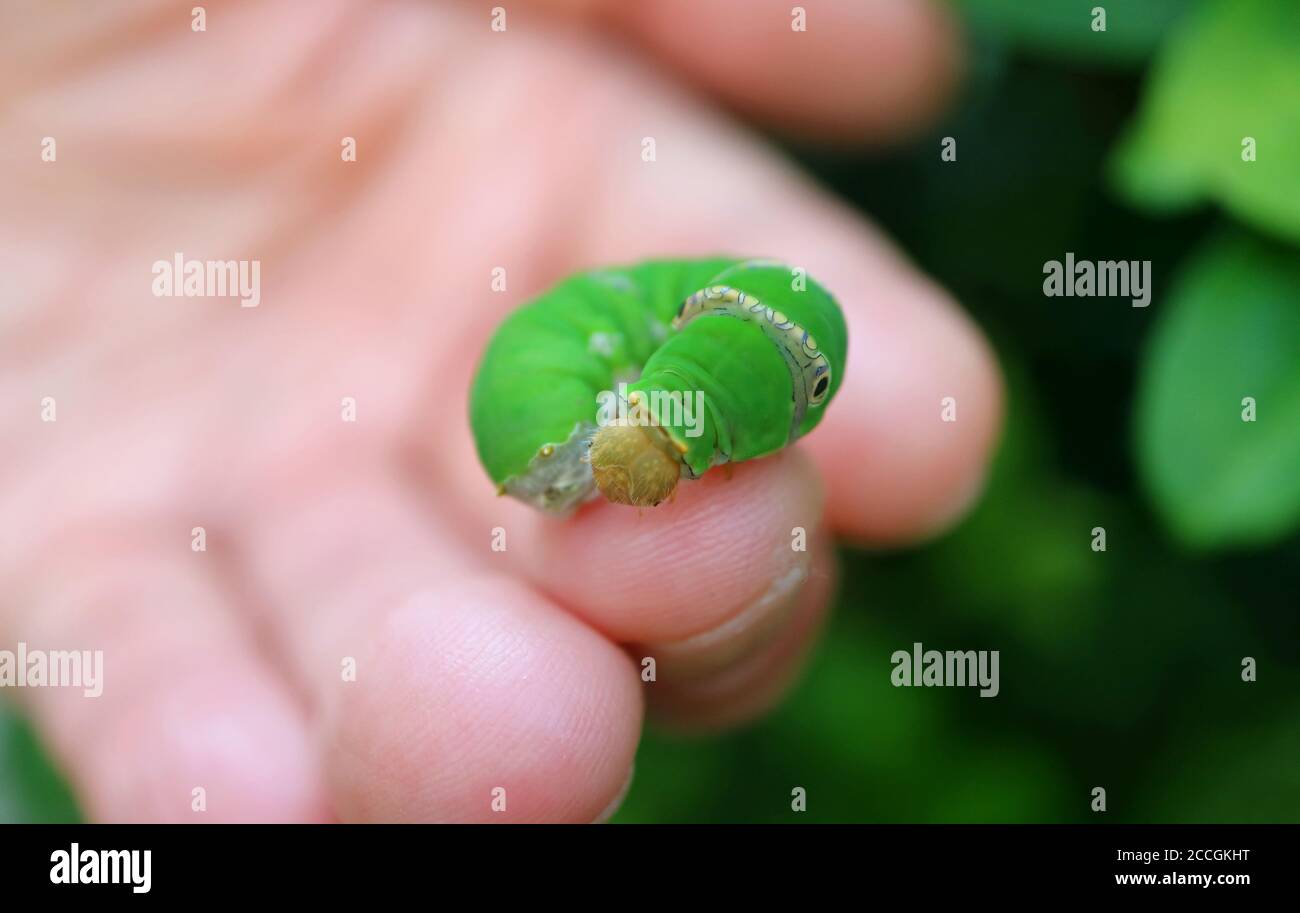
Closeup a Vivid Green Lime Tree Caterpillar on the Finger Stock Photo Alamy
When you spot caterpillars on your lime tree, you don't necessarily need to grab a synthetic pesticide. You can remove caterpillars organically. Handpick The Caterpillars This is the most organic way of removing caterpillars from a tree. If your lime tree is not very high, you can inspect it and pick off the caterpillars by hand.
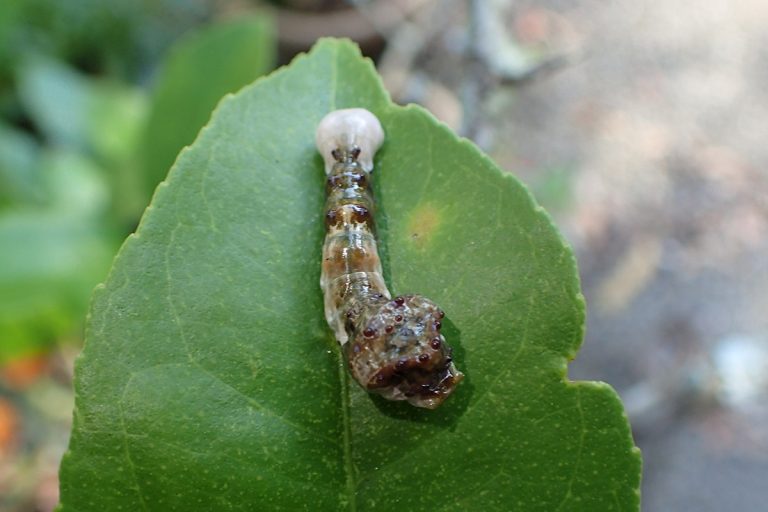
Giant swallowtail caterpillar on Meyer Lemon tree leaf. The WFSU Ecology Blog
Papilio demoleus is a common and widespread swallowtail butterfly. The butterfly is also known as the lime butterfly, [1] [2] lemon butterfly, lime swallowtail, and chequered swallowtail. [2] These common names refer to their host plants, which are usually citrus species such as the cultivated lime.